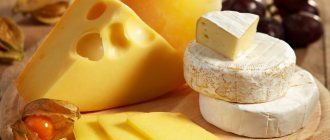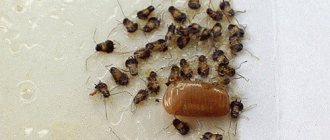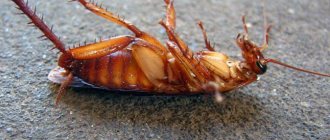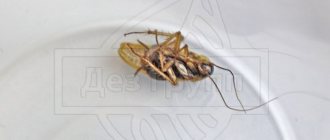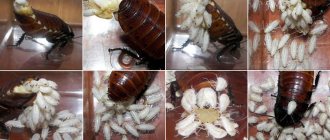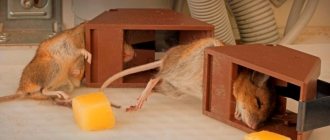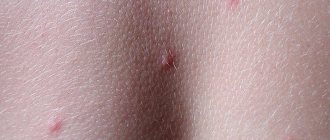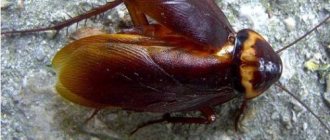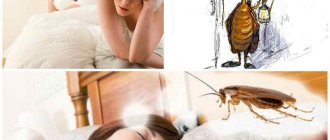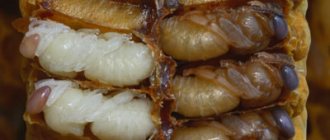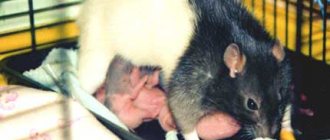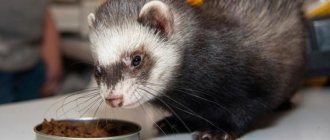While cockroaches cause disgust, disgust, fear and a whole range of negative emotions in the average person, researchers have a genuine interest in these creatures. These are, without exaggeration, amazing insects. Just look at the following facts about cockroaches.
- They can live without a head. For about seven to ten days, until the body feels a lack of water and food, the body can act autonomously.
- They can hold their breath for up to 40 minutes. This helps them retain moisture in the body and also protect them from chemicals sprayed in the air.
- They run fast. Sensing danger, insects can reach speeds of up to 5 km/h, which is quite good for those with short legs.
- They escape expertly. To hide from its pursuer (most often from a person), a cockroach can change its trajectory up to 25 times per second.
- Virtually invulnerable. Pests don't even care about a nuclear explosion. The reason is a slow cell division cycle.
What do they eat?
When explaining what domestic cockroaches eat, it is worth mentioning right away: unlike representatives of humanity, parasites are not selective about food, since the latter act for them only as a means of survival.
Despite this fact, there are a number of foods that cockroaches especially love to eat.
Preferences
What pests like to eat most is:
- any types of bread;
- sweet;
- any types of cereals;
- vegetables and fruits;
- meat (raw or cooked).
The list of products is impressive, however, parasites like to be content with food leftovers rich in fats and carbohydrates.
Attention! It is believed that insects like beer. This fact is used to prepare a trap for cockroaches.
In the absence of food, the insect is capable of eating anything.
For example, a hungry cockroach may well feast on:
- cosmetic product (cream or lotion);
- shoe polish;
- household glue;
- leather goods;
- books, etc.
Consequently, cockroaches are difficult to frighten with limited access to food: they will find something to eat.
Water requirement
A cockroach needs access to water to survive. Red parasites are able to live without food and water for more than 10 days; if the water source is not blocked, this period is extended to 42 days. For this reason, during periods of drought, pests immigrate into homes.
Accordingly, the following steps will help get rid of cockroaches in your apartment:
- getting rid of standing water in the sink;
- avoiding above-water indoor flowers;
- elimination of condensate on pipes;
- restricting access to the aquarium.
Food nearby
How long can a cockroach survive without food? Left without water, black kitchen cockroaches can live for a week to a week. When cockroaches have water but are deprived of food, they can survive for months. However, they will die faster if you give them dry food but no water.
We use food for cockroaches against them
Forms of release of poisoned baits.
Since cockroach poison is available in various forms, useful tips for using them vary:
- In specialized stores, you most often find various ready-made baits placed in special boxes. These are commonly called insecticide traps.
- Various gels and pastes against cockroaches are widely used: they contain liquefied edible substrates saturated with poisons.
- Concentrates are sold in plastic bottles of various sizes, their price is quite high. They are more difficult to find freely available than granules or tablets, since they can only be handled by professional pest control stations who know the precautions and know how to prepare poison from highly concentrated poisons.
- Completely ready-to-use baits are produced in the form of granules and tablets, which need to be placed only in the corners.
Cockroaches have adapted and learned to avoid sweetened poison. For decades, people have been getting rid of cockroaches by putting out bait mixed with poison. But then the killer product stopped working. Cockroach populations continued to increase. Many of the cockroaches have stopped eating sweets, abandoning the corn syrup that was designed to attract them. For many years now, the sign of sugar withdrawal has become so common that the bait has become useless.
Cockroaches are very adaptive. The findings illustrate the evolutionary prowess that has made cockroaches so difficult to eradicate that it is jokingly suggested they could survive a nuclear war.
A genetic mutation gave some cockroaches a competitive advantage that allowed them to survive and reproduce. The key is certain neurons that signal the brain to eat. In normal cockroaches, glucose excites neurons that tell the brain “Sweet!” In mutant insects, glucose activates neurons that say “Sweet!” and those who say “Ugh!”, “Ugh!” the neurons attenuate the signal from others, so the brain gets the message that the taste is terrible. This unusual neural activity was observed in glucose-hating cockroaches.
How they eat
Pests usually search for food at night. During the day they hide under boards, baseboards, and in cracks. If the parasites remain visible during the daytime, we can talk about a large population size.
Female cockroaches eat more - they can get enough of 50 mg of food - this is the daily norm.
The male individual eats almost half as much. It is worth noting that this type of pest loves to “try.” The attention of parasites is attracted by food waste left on the table or in the trash can.
Oral apparatus
Before you find out what cockroaches eat, you need to understand what their mouthparts are, since it determines what kind of food they can eat.
The oral apparatus of these insects consists of upper and lower lips, which were transformed during the process of evolution. There are also lower and upper strong jaws on which the palps are located. The olfactory palps help the cockroach determine food suitability. The upper jaws have serrations that resemble saw teeth. They act as teeth as they grind food. While food is being chewed, it is also moistened with saliva. This type of mouthparts is called gnawing, which makes it possible to feed on any food.
The insect's jaws contain chitin, which makes the mouthparts durable.
Damage from insects and food debris left behind
In science, the harm of parasites to human health is referred to as “blatthopterosis.” This concept includes an allergic reaction, the transfer of worm eggs, and mechanical damage to the skin from insect bites.
The basic danger of cockroaches to humans is the ability of pests to transmit diseases. These specimens can move not only within the living space, but also climb into the sewer, garbage chute, or attic.
There are no food products in these places - the food for the “barbels” is made up of improvised means. As the meal is completed, the pests collect numerous bacteria on their chitinous cover, which they then bring into the house - everything that the “local” cockroaches feed on becomes infected.
In addition, pests are capable of eating human and animal excrement, breeding a whole range of pathogenic microorganisms in their digestive tract.
Together with the latter, the cockroaches convey to their owners:
- dysentery;
- salmonellosis;
- pneumonia;
- genital infections, etc.
The above organisms and helminth eggs end up on food, on the surfaces of household items and furniture. A person becomes infected through food or unwashed hands.
Nutritional Features
Animals can go hungry for a long time. Their metabolism may slow down, so they live without food for about a month. But their need for water is much greater. Some species live without moisture for about 10 days, but this is the longest.
These insects climb through garbage dumps and sewers and then carry various pathogenic bacteria on their legs and abdomen. Worm eggs were found in the feces left by cockroaches.
Cockroaches are omnivores.
Where do cockroaches live in an apartment?
In a house infested with cockroaches, pests can often be found in the bathroom or kitchen - places where food and water are accessible.
Insects love dark, hard-to-reach places:
- cracks behind baseboards;
- under peeling wallpaper or tiles;
- in tables and cabinets;
- in a microwave oven;
- in the dishwasher;
- in the refrigerator (near the heat exchanger);
- in a gas stove;
- in computers, laptops (at power supplies);
- under the sink, in the toilet tank.
- in the electrical panel, garbage chute.
Pests enter a house or apartment through sewerage, ventilation systems, etc.
Video
Where do cockroaches hide in an apartment?
The rapid destruction of the Prussians is SES
If parasites do enter the house, they must not be allowed to multiply excessively. The best option in this case is to call an SES to your home. Solving the issue of exterminating cockroaches with the help of a sanitation service has many advantages:
- Experts will quickly determine how longhorned beetles enter the house and their numbers.
- The optimal insecticide will be selected.
- will be disinfected .
- The technologies that are used in this case make it possible to spray the insecticide in such a way that its drops will reach even the most inaccessible places, so insects will have no chance of survival.
- The anti-cockroach service uses only certified preparations that are safe for residents, do not leave traces or odors, and do not damage furniture or repairs.
- The treatment is carried out in 1-2 hours, so the owners do not have to leave their home for a long time.
- The cockroach baiting service provides a guarantee on its work and can re-treat if necessary.
The best way to forget about cockroaches forever is to call sanitation specialists.
How to protect food from cockroach infestation?
The presence of food leads to the activation of the reproduction process of insects, and also competes with baits for harmful organisms, reducing the effectiveness of the latter. For this reason, food should be practically eliminated from accessible places.
You can do this as follows:
- It is worth sealing the lid of the trash can in order to limit the access of parasites to food waste;
- the trash bin must always be kept clean, wiped and waste removed regularly;
- the filter in the sink should be cleaned as often as possible to prevent the accumulation of food debris;
- It is recommended to keep kitchen surfaces clean and wipe them regularly;
- Do not allow dirty dishes to be stored in the sink;
- all household equipment (microwave ovens, toasters, ovens, etc.) must be regularly checked for crumbs and food waste;
- Re-seal food after opening the packaging (alternatively, use food containers with a tight-fitting lid);
- It is recommended to monitor pets' food and water - regularly clean the area nearby, and only put food out when necessary.
What do they eat on the street?
Despite the fact that over many decades cockroaches have closely rallied to people and their homes, you should not think that once they get outside they will die. In spring and summer, Prussians quickly adapt to other living conditions and look for ways to penetrate human habitation. Outside the house, insects can eat the same foods as inside. If you can’t find them, they can eat:
- grass;
- foliage;
- leftover food near trash cans;
- dead small insects;
- crumbs of food in spontaneous markets.
Popular questions
Do cockroaches bite people because they are hungry?
This is a very rare occurrence. However, scientists confirm the fact of such activity of insects: they are able to bite through the delicate skin on the neck, elbow, and eyelid. Children are at risk.
What do you feed decorative cockroaches?
The diet of decorative cockroaches is very diverse. Insects are fed dry food for dogs and cats, fruits and vegetables, sweets, cereals, bran and muesli.
Who among the inhabitants of the animal world eats cockroaches?
Insect enemies can be considered as an effective remedy for cockroaches. Chickens like live parasites, and ants like dead ones. Prussians eat the eggs of individuals. Among those who like to feast on red or black pests are: hedgehogs, cats, spiders, scorpions.
How to find out that cockroaches live in an apartment?
The following can tell you about an undesirable neighborhood: dry shells of pest eggs, empty chitinous covers, excrement in the form of black dots, visual contact.
Are poisoned pests dangerous?
Poisoned parasites are more dangerous for domestic animals, which can find and eat dead individuals. In the future, the development of severe poisoning cannot be ruled out.
In order to prevent this, after baiting insects, their remains should be collected mechanically.
Exotic insects menu
By the nature of their diet, exotic cockroaches are, as a rule, herbivorous. In nature, they feed on eucalyptus leaves and other plant foods. At home the following is used as food:
- Apples, ripe bananas.
- Vegetables: carrots, tomatoes and beets.
- Various cereals and porridges made from them.
- Flour products and bran.
It is necessary to periodically feed exotic cockroaches with food of animal origin, crushed cottage cheese.
Before compiling a diet, the type of insects that are bred at home is taken into account, which species are not eaten.
Insects from Madagascar are not given dog food because it shortens their lifespan. It is useful for marbled insects as it contains certain substances and components.
Pate “For Sandwiches”
Fry slightly chopped garlic and onion in olive oil. Place cockroaches (pre-frozen) and spices here. Cook for a few minutes. Wipe the fried insects along with the vegetables with a sieve.
Sandwich with cockroach pate
Place the resulting mixture on low heat and evaporate until all excess liquid is gone. The cockroach paste should have a thick consistency. You can spread it on croutons, pieces of white or black bread, and decorate with herbs.
